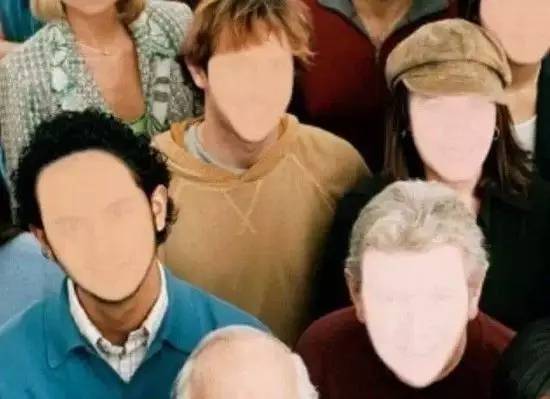(单词翻译:单击)
听力文本
'Face Blind' People Cannot Remember Faces
From VOA Learning English, this is the Health & Lifestyle report.
Some people are great at remembering faces. Once they meet you, they never forget how you look. They might say things like, "I never forget a face." or "I'm really good with faces."
For some people, remembering a face can be difficult. You may have to meet them several times before they can recognize you.
For others, remembering a face is simply impossible. Such people have a condition of the brain called "face blindness." Its actual name is developmental prosopagnosia, or DP for short.
Experts say DP can differ greatly from patient to patient. In less severe cases, people are unable to describe the face of someone they have just met. In severe cases, people cannot even recognize their own children in a group photograph.
Many people who have DP show no clear signs.
Take, for example, Dacia Reid.
If you met her, you probably would not know that she suffered brain damage as a child. There would be no sign of it until you meet her a second time. She would not remember how you looked.
Reid has mostly recovered from her injuries. But now, she suffers from face blindness.

Dartmouth College study
Face blindness was once thought to be very rare. But recent studies have shown that it might be more common than experts had thought.
The latest study on face blindness come from the Prosopagnosia Research Centers at Dartmouth College in the United States. The National Science Foundation provided financing for that research.
Bradley Duchaine is a professor of psychological and brain sciences at Dartmouth College. He worked closely on this study with Guo Jiahui, also of Dartmouth.
Duchaine says that the research showed "neural abnormalities in many people with DP are more widespread than previous studies have suggested."
The researchers studied how people recognize and process faces. They compared 22 patients with DP to 25 other people. The researchers showed all the subjects videos of faces, bodies, physical objects and other images.
Then they used functional magnetic resonance imaging, or fMRI, to measure activity in each person's brain. An fMRI can identify chemical and other changes resulting from blood flow.
One test involved famous faces. The researchers wanted to find out if the subjects could recognize pictures of famous people.
The woman we spoke about earlier, Dacia Reid, took part in the study. When shown famous faces, she drew a blank with actor George Clooney.
"Eh! I don't know."
... and former President George Bush.
"Ah, I don't know."
However, she could identify actor John Travolta because of one specific feature.
"Um, John Travolta. Yeah, baby! That chin. You can't deny the chin."
Duchaine says that studying face blindness may help researchers understand how the brain works.
"My main interest is trying to understand the organization of the normal brain, and we use these brains that have suffered brain damage to try to make inferences about the way the normal brain operates."
For example, Duchanie says his team wanted to see if the brain recognized people and things in the same way. So, the researchers tested how well people with face blindness could recognize common objects, such as cars.
They found that people with DP may not have been able to remember faces, but they could recognize objects, scenes and bodies.
"And so imagine that we find somebody who suffered brain damage. And they can't recognize faces any longer, but they still recognize cars in a parking lot and they can recognize scenes and things like that."
He says that suggests that faces are processed differently in the brain.
Duchaine says this study on face blindness will not directly lead to any treatments. However, he said it could lead to a deeper understanding of how we all remember the world around us.
"We hope that by really developing and understanding face processing itself — that will provide us with a model for understanding how other parts of the brain work."
And that's the Health & Lifestyle report. I'm Anna Matteo.
重点解析
重点讲解:
1. for short 作为简称;作为缩写;
Artificial Intelligence (or AI, for short) is the name given to any attempt to have computers gain attributes of the human mind.
人工智能(缩写为AI)这个名称来源于一些想让计算机拥有某些人类智能属性的尝试。
2. recover from 恢复健康;复原;
He's still recovering from his operation.
手术后,他仍在恢复之中。
3. result from 由…产生;由…引起;
Scientists suggest that this may result from alcohol's effect on visual perception abilities.
科学家认为这可能是由于酒精影响到了大脑的视觉认知能力。
4. take part in 参加;参与;
However, most of the parents thought their children would miss out if they did not take part in such activities.
尽管如此,大多数家长还是认为如果他们的孩子不参加这些活动,他们就会远远落后于别人。
参考译文
脸肓症患者记不住别人的脸
这里是VOA慢速英语健康生活报道。
一些人很擅长记住他人的脸。他们见到你后,就永远不会忘记你的长相。他们可能会说,“我从不会忘记别人的长相”或“我非常擅长记住他人的长相。”
但对有些人来说,记住别人的长相可能很难。你可能要和他们见好几次面,他们才会认出你。
而对其他人来说,记住一个人的长相简直是不可能的事。这类人患有一种名为“脸盲症”的脑部疾病。这种疾病的实际名称是“发展性面孔失认症”,简称DP。
专家表示,发展性面孔失认症患者的表现可能有很大不同。在不太严重的情况下,人们无法形容他们刚刚见过的人的长相。而在严重的情况下,人们甚至无法在集体照中认出自已的孩子。
许多发展性面孔失认症患者没有明显症状。
以达西亚·里德为例。
如果你见过她,你可能不会知道她小时候遭受过脑损伤。在你第二次见到她时,才会有一些迹象表现出来。她不会记得你的长相。
里德的伤势已经基本上恢复了。可是现在她患有脸肓症。
达特茅斯学院的研究
脸盲症曾被认为是罕见的疾病。但是最近的研究表明,这种疾病可能比专家认为的要常见得多。
针对脸盲症的最新研究由美国达特茅斯学院的面容失认症研究中心进行。美国国家科学基金会为这项研究提供了资助。
布拉德利·杜查是达特茅斯学院的心理学和脑科学教授。他和同样来自达特茅斯学院的郭佳惠(音译)在这项研究中进行了密切合作。
杜查表示,研究显示,“许多发展性面孔失认症患者表现出的神经系统异常现象比此前研究所表明的要更广泛。”
研究人员对人们识别和处理他人长相的方式进行了研究。他们将22名发展性面孔失认症患者和另外25个人进行了对比。研究人员向所有实验对象展示了脸部、身体和物体的视频以及其他图像。
然后他们用功能性磁共振成像(简称fMRI)技术来测量每个人脑部的活动情况。功能性磁共振成像技术可以识别出血液流动造成的化学变化和其他变化。
其中一项测试是识别名人面孔。研究人员想知道实验对象能否识别出著名人物的照片。
上文提到的那名女性达西亚·里德参加了这项研究。在看名人的照片时,她没有认出演员乔治·克鲁尼。
“啊!我不知道。”
她也没有认出美国前总统乔治·布什。
“啊,我不认识。”
但是,她凭借一个具体特征认出了约翰·特拉沃尔塔。
“啊,这是约翰·特拉沃尔塔。耶!他的下巴,不可否认,他的下巴很特别。”
杜查表示,研究脸盲症也许能帮助研究人员理解大脑的工作原理。
“我的主要关注点是试图去理解正常大脑的组织,我们用遭受过脑损伤的大脑去推断正常大脑的运作方式。”
举例来说,杜查说他的团队希望了解大脑是否以同样的方式识别人和物。因此,研究人员对脸盲症患者在识别汽车等常见物品上的表现进行了测试。
他们发现,发展性面孔失认症患者可能无法记住他人的长相,但是他们能识别出物体、风景和身体。
“想象一下,我们发现一些得过脑损伤的人,他们无法识别出他人的长相,但是他们能识别出停车场的汽车,也能识别出风景之类的东西。”
他说,这表明大脑中的人脸识别程序是不同的。
杜查表示,这项脸盲症研究不会直接带来任何治疗方法。但是,他说这一研究能使人们更加了解我们记住周围世界的方式。
“我们希望,开发并理解面部处理能为我们提供了解大脑其他区域运作方式的模型。”
以上是健康生活报道。我是安娜·马迪奥。
译文为可可英语翻译,未经授权请勿转载!


